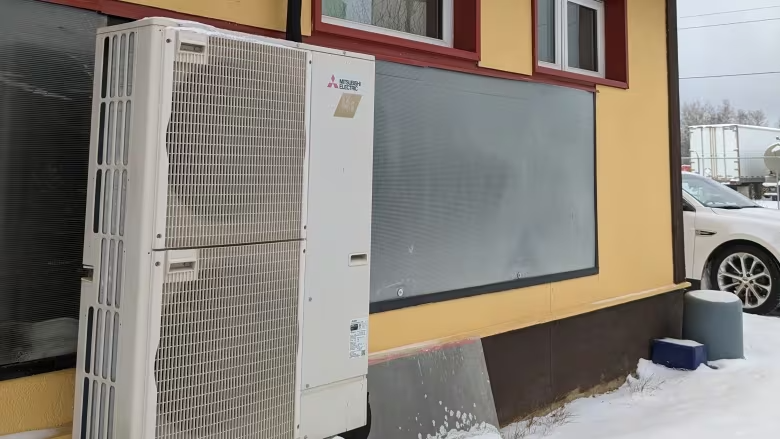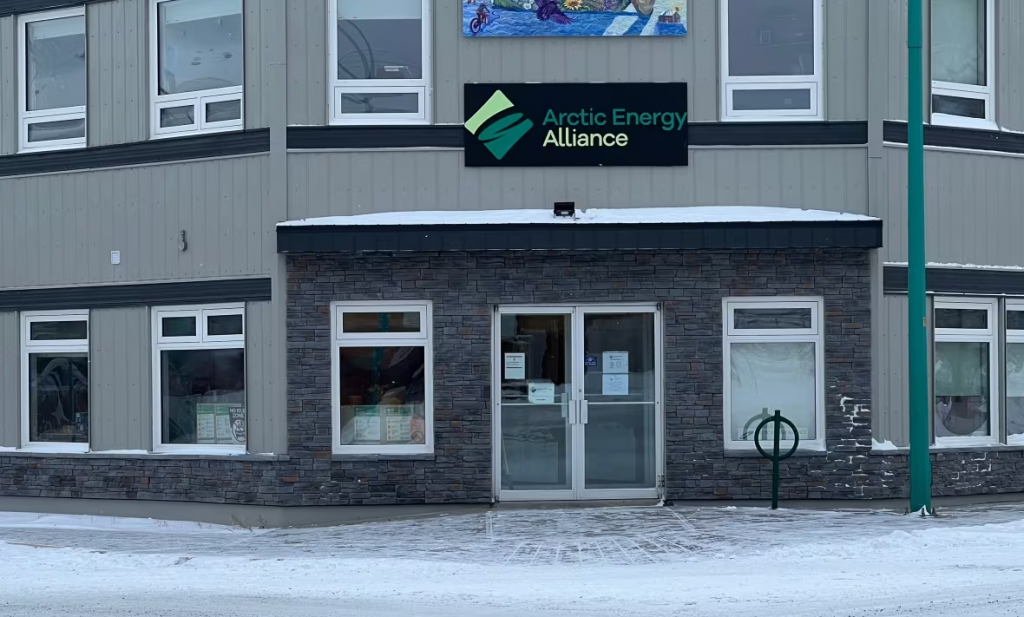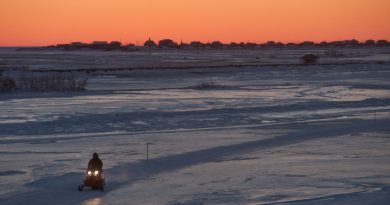Are heat pumps efficient in the North? Jury’s still out says non-profit

· CBC News
Momentum has been growing toward heat pumps as greener home-heating alternative to oil or gas
Heat pumps have been getting a lot of attention lately, promoted as a greener alternative to heating with oil or gas. But some say the jury is still out on whether the devices are viable in the North.
Momentum toward heat pumps, which run on electricity, has been growing in Canada. The federal government’s decision last month to exempt home heating oil from the federal carbon tax also included a plan to incentivize the switch to heat pumps for some Canadians.
The federal plan doesn’t apply to the N.W.T. because the territory has its own carbon-pricing policy. But interest in greener heating technology has increased in the North.
Mark Heyck, the executive director of the Arctic Energy Alliance in the N.W.T., has been looking at how well heat pumps perform in the North. Partnering with Housing NWT, the non-profit organization has been studying the pumps’ efficiency on two separate dwellings in the Yellowknife area.
After a year of gathering data, Heyck says the pumps run “as expected,” but there’s still more data to gather. With an interim report due shortly, he says one thing seems certain: as the temperature drops, so does the efficiency of the devices.

Heyck admits that the manufacturer’s specifications as to when the pumps start to lose efficiency are often overestimated.
“This is one of the reasons we do real-world testing,” he told CBC News. “We’re seeing around –15, –20 [C], when it kind of starts to lose its efficiency.”
The higher cost of electricity in Canada’s North may be another obstacle for consumers thinking of making the switch, and Heyck said the current electricity output in the North couldn’t accommodate mass heat pumps.
But as the technology stands now, there’s good news coming out of the South Slave, according to Dennis Bevington. The long-time Fort Smith, N.W.T., resident has been installing heat pumps in the area for five years through his company, Stand Alone Energy Systems Ltd.
The slightly-warmer climate of the region may give it a leg up over other parts of the territory. Bevington believes the devices are “viable as an alternative,” in his area, but he’s skeptical about their efficiency any further north.
Bevington adds that the technology is changing quickly, with newer models incorporating heat-storage components that allow energy to be saved for future use.
Heating and cooling
Heat pumps can serve a dual purpose, heating a house in the winter and cooling it during the summer. Heyck says that may become more important in the years to come, as the climate changes.
“We often didn’t think of air conditioning but that stands to change in the years ahead as well,” he said. “I think that equipment that can provide both heating, and cooling in the summertime when we may need it, will gain in popularity.”
Heyck says the N.W.T.’s current heating systems will likely remain in place for the foreseeable future. He said home heating in the N.W.T. is a matter of “life or death.”

The Arctic Energy Alliance plans to expand the heat pump study next fiscal year with additional housing units to gather more data.
Even if heat pumps are not the solution for the North — at least for now — Heyck says a “green standard” could be reached in the N.W.T. through the use of biomass heating, with wood or pellet stoves.
The non-profit organization offers rebates for 50 per cent of the purchase cost of a wood stove or a wood pellet stove, up to $2,000.
Related stories from around the North:
Canada: Sanikiluaq wind project represents major Nunavut renewable energy policy shift, CBC News
Japan: Japan to ensure stable energy supply despite US sanctions on Russia’s Arctic LNG 2, Reuters
Norway: Norway’s oil minister: “We need new discoveries”, The Independent Barents Observer
Russia: More Russian Arctic oil via Murmansk redirects to India, The Independent Barents Observer
United States: Indigenous leaders divided over ANWR court ruling, Eye on the Arctic



